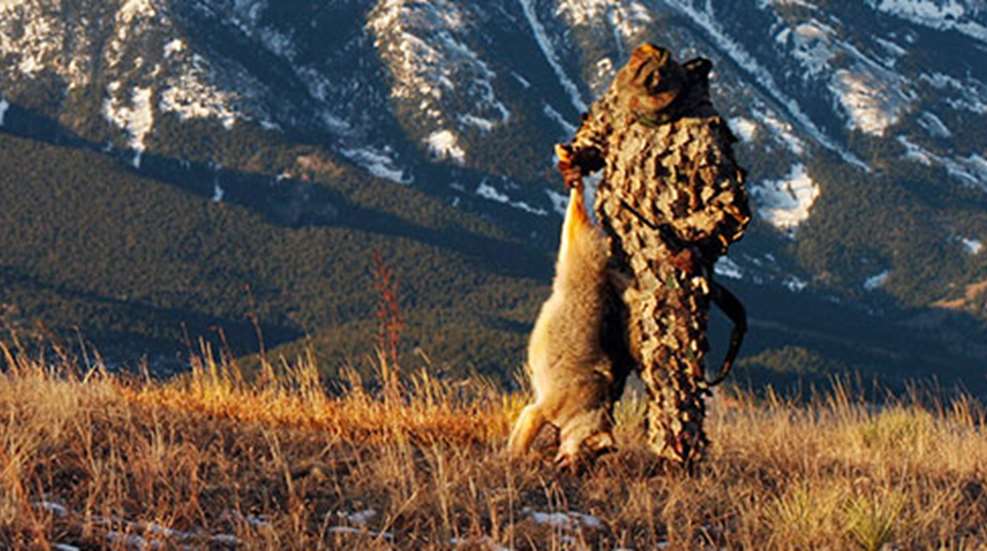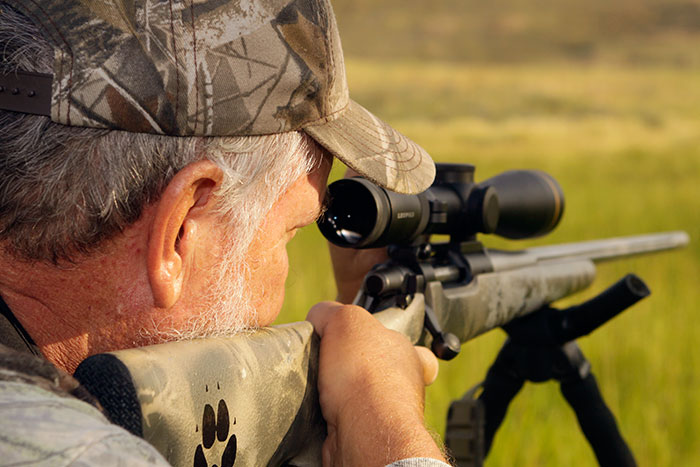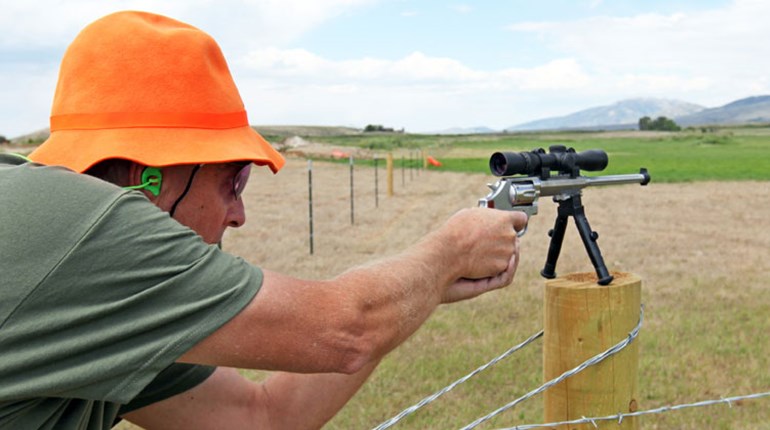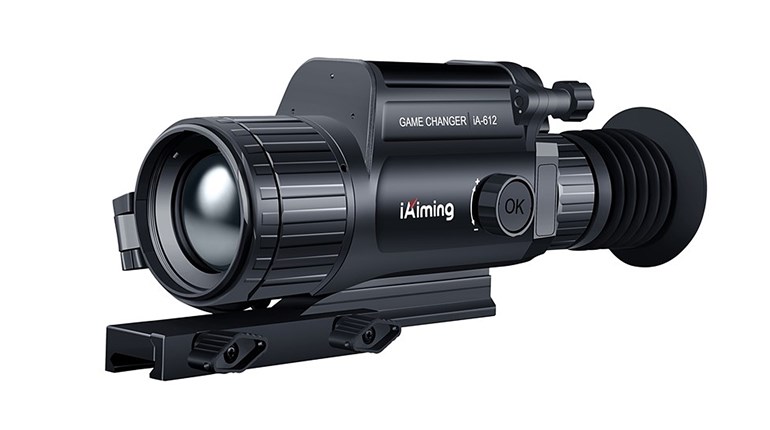
I admit I didn't know what I was saying as I pulled the diaphragm call from my mouth and the saliva began to ice up from the single-digit temperature. I had just finished a series of howls to tempt any unseen coyotes into shooting range, but the message was as foreign to me as listening to trackers strategize amongst themselves while on my first Africa safari. It all sounded good, but what it really meant was a mystery to me.
Twenty minutes later I spied a dot on the dusky horizon. The dot moved and transformed into an incoming coyote obviously zeroed in on my location. I easily shot that coyote and a handful of others over the coming weeks as they scanned the grasslands for the loudmouth making the ruckus (me). And so I was hooked on talking back to coyotes.
My introduction to coyote vocalizations kicked off more years ago than I wish to declare. Since then I've made howling a mainstay in all my coyote hunts, and I've learned enough of the lingo to sound literate.
"Coyotes are always expanding or upgrading territory," explains Craig Maris, a veteran Wyoming coyote hunter. Maris prefers to hunt over his decoy dog Tucker and recognizes that understanding coyote language is critical to send the right message regardless of the season.
"Coyotes howl to assess territory," he says. "They use howls to see if territory holds other coyotes, and they use it as a warning to other coyotes, like a no trespassing sign. Howls are just one component to coyote conversations, and if you understand their language your success will increase."
Fur Season Dialog
The majority of coyote hunting takes place from fall through winter. It's when coyote numbers peak and fur primes. As summer litters disperse and settle into new territories, coyote vocalizations can help you lure in young coyotes looking for social interaction. On the flip side, older coyotes consider any howls possible intruders, giving them reason to investigate for a possible territorial dispute.
Steven Reinhold, a 30-year predator hunting veteran and Mossy Oak predator pro staff regional manager for the eastern United States, says every coyote outing is a learning experience. Such experience teaches him that talking back to coyotes has its rewards.
Reinhold incorporates both a mouth and a digital caller into most hunts for best results, but instead of just blasting out an incomprehensible sound he's strived to understand coyote language so he grasps the message in his call invitations.
"I use a lone howl and oftentimes I don't get a response. I'm not expecting it," says Reinhold. "Even so, I know the message I've sent is telling other coyotes that I'm a lonely male, possibly looking for love but definitely focused on bringing attention to myself."
Reinhold uses this call year-round, but especially in the months when furs have value. He understands the territorial instinctiveness of coyotes. Proclaiming yourself in another coyote's territory spurs many of them into action.
Primos pro staff member Brian Kosoglow, a Pennsylvania predator pursuer, agrees on sending an initial message that's reassuring, not confrontational.
"I prefer a serenade or invitation howl," he says. "It's nonthreatening and really gets the call out there, especially when I'm hunting during daylight hours in wooded areas. The howl announcement can say everything from ‘I'm hunting in your area' to ‘Are you even here?' Howls can be playful or as antagonistic as a rallying cry. It depends on your inflection, so it pays to listen to real coyotes and their variety of howls."
Kosoglow realizes food is scarce during the winter months leading to territorial competition. Howling lets other coyotes pinpoint each other's position. Kosoglow also takes nature notes and mimics what he hears. Typically he follows a particular calling ritual. He starts with a bark and a howl. He then pauses before he barks twice and howls again. The third and last howl in the sequence is a howl without the bark. It's nonaggressive, but still an attention-getter.
"Don't give up if you don't get a response," stresses Ohio-based Reinhold. "To me, the reason some coyotes don't respond is that they may have been whipped recently by another coyote, causing them to keep quiet. Still, curiosity kills the 'yote. I'm a firm believer in that. Even if they are quiet they may still play the wind to see who's around. The next thing you know you'll turn around and there's one sitting quietly studying your position."
One strategy Kosoglow utilizes: He sounds like more than one coyote. Hostility isn't his goal, but he does want to draw attention by sounding like possible territorial trespassers.
"Primos has a call called the Double Whammy (primos.com). It simulates two coyotes of different pitches serenading together," he says. "For a solo caller, this is a great way to create the vocalizations of two dogs in an area. Oftentimes when we do our sets here in the East, we will have a caller and a shooter. Fortunately, my shooter is an excellent caller so we will call together while sitting apart to create a scenario of two different dogs in an area. It's an effective way to arouse coyotes to investigate."
Although a howl may pique a coyote's interest, you still may need to appeal to their stomach to draw some coyotes into shooting range. If howls don't draw a response, especially after a few minutes of waiting, ring the dinner bell.
"Most predatory animals are familiar with the dying-rabbit call. It's what they hear in nature and what most predator hunters use," explains Reinhold. "I like to switch up to a game bird like a chicken distress call. It's farmland where I hunt, so coyotes find that call convincing anytime, especially during fur months. If I want a change from that I'll go to blackbird in distress, but bird sounds work well for me in the East." Reinhold also is not opposed to adding a feminine tone going into the New Year. In most regions of the country, February is breeding season so including female whines could entice a lonely male to investigate a possible mate. Again, quietness after any coyote vocalization isn't uncommon, but every so often a coyote will respond, saying, "I'm over here and on my way." Get ready.
Spring, Summer Conversation
Fall and winter is when you make money on coyotes, but as these adaptable predators increasingly flex their muscles across the country, spring and summer coyote hunting makes sense. This is especially true if you manage areas for maximum wildlife benefit. High densities of coyotes can spell doom for many game species, especially fawns.
Fawn survival increases herd size and is referred to as recruitment by wildlife managers. Some states don't monitor recruitment, and analysis varies in other states, but steady or declining deer recruitment statistics have raised suspicions that the eastward movement of coyotes may be having an increasing impact on deer populations. The Quality Deer Management Association sees the warning signs. "In some areas predators may have little impact, but recent research in Alabama, Georgia and South Carolina confirms that bobcats and coyotes can significantly reduce fawn recruitment rates," read a recent statement from the organization.
Many studies nationwide confirm this trend including a recent, six-year study from the Savannah River nuclear facility in South Carolina. Newborn fawns there were captured and fitted with tracking collars. If the collar stopped moving for a significant amount of time, researchers investigated. The results were shocking. Eighty percent of all fawn deaths were associated with coyote predation. Ignoring coyotes in the offseason may be a recipe for management disaster on your property.
Reinhold agrees and that's why he continues coyote pursuits in warm weather. "In spring and summer, I vary my coyote vocalizations from lone howls to using female whines," he says. "This works early, before litters are born. Coyotes will home in on howls to protect territory, and any lone coyotes will still be looking for mates. After pups are born, I switch to pup sounds. By June and July coyote pairs are busy with litters, so I concentrate more on puppy yips. If that doesn't pull in a coyote I'll continue the setup with a fawn-in-distress call."
Maris concurs on offseason coyote control and kicks off his warm-weather setups with a friendly howl. He doesn't want to jeopardize the interest of subordinate coyotes, but after a short wait Maris switches to an attention getter: pup in distress.
"It's my go-to call because once pups are born the parents have total focus on their welfare," he says. "It's a coyote parent's job to save the butt of their pups, and that continues all the way to September when pups finally go out on their own."
Although fawns make up a large part of the summer diet for many coyotes, Reinhold doesn't forget coyotes are opportunists. They'll feed on anything, so after howling he's not afraid to include coon-pup-in-distress calls or cat-in-distress calls. Either attracts, especially when calling in the shadows of suburbia where coyotes prowl and take advantage of domestic housecats.
What about the Bark?
Not all coyote vocalizations bring them running. One of the most frustrating sounds you could hear from a coyote is its bark. A series of barks generally means a coyote is suspicious, but it doesn't necessarily mean it's time to head for the truck. Reinhold doesn't argue with the suspicious nature of the bark, but feels a coyote has more to say.
"I honestly believe that barking is letting you know he's there," Reinhold says. "I think it includes a bit of aggression combined with questioning about what's going on. If they smelled you and feared danger, they'd be gone, not barking."
Kosoglow takes it one step further. When he hears a series of short barks his first thought is, "I'm busted." The coyote may have seen a flicker or sensed something suspicious, but Kosoglow acknowledges as well that the coyote is on edge.
"In cases like this the scenario really controls my actions," Kosoglow continues. "If this occurs in an area I want to hunt again, I may quietly slip out and wait for more favorable conditions. Other times, I will try to really work the wind and terrain to my advantage, and move for another try at calling. Also, the amount of calls I've already used will determine my actions, and whether I'm getting any responses from any other dogs on the same set. In that case I'll sit tight and continue calling. Another dog may come in."
Reinhold isn't ready to throw in the towel either, and realizes that barking is often followed by quietness. When a coyote goes quiet, Reinhold equates it to turkey hunting and having a gobbler shut up unexpectedly.
"It's not a game ender," he says, "and like turkey hunting, I know they want to circle. But unlike a turkey that doesn't smell, a coyote is trying to make a downwind move. That's why it's important to set up with shooting lanes that allow you to monitor the possibility of a coyote circling downwind."
Like all stories, there are two sides. According to Maris, some barks can be helpful. He is familiar with barks tied together with howls when he teams with his dog. He refers to these as "challenge" barks and howls. When a coyote approaches his vocalizations with challenge barks and howls, Maris gets ready. The coyote may just be bold enough to take on his dog, Tucker, providing him with a concert with a fat-lady ending.
Coyote language may not be as clear as English, but understanding some simple sounds like the howl, yip, whine and bark could have you conversing favorably with coyotes. Press the debate and the conversation may end up unfavorably for your quarry.






































